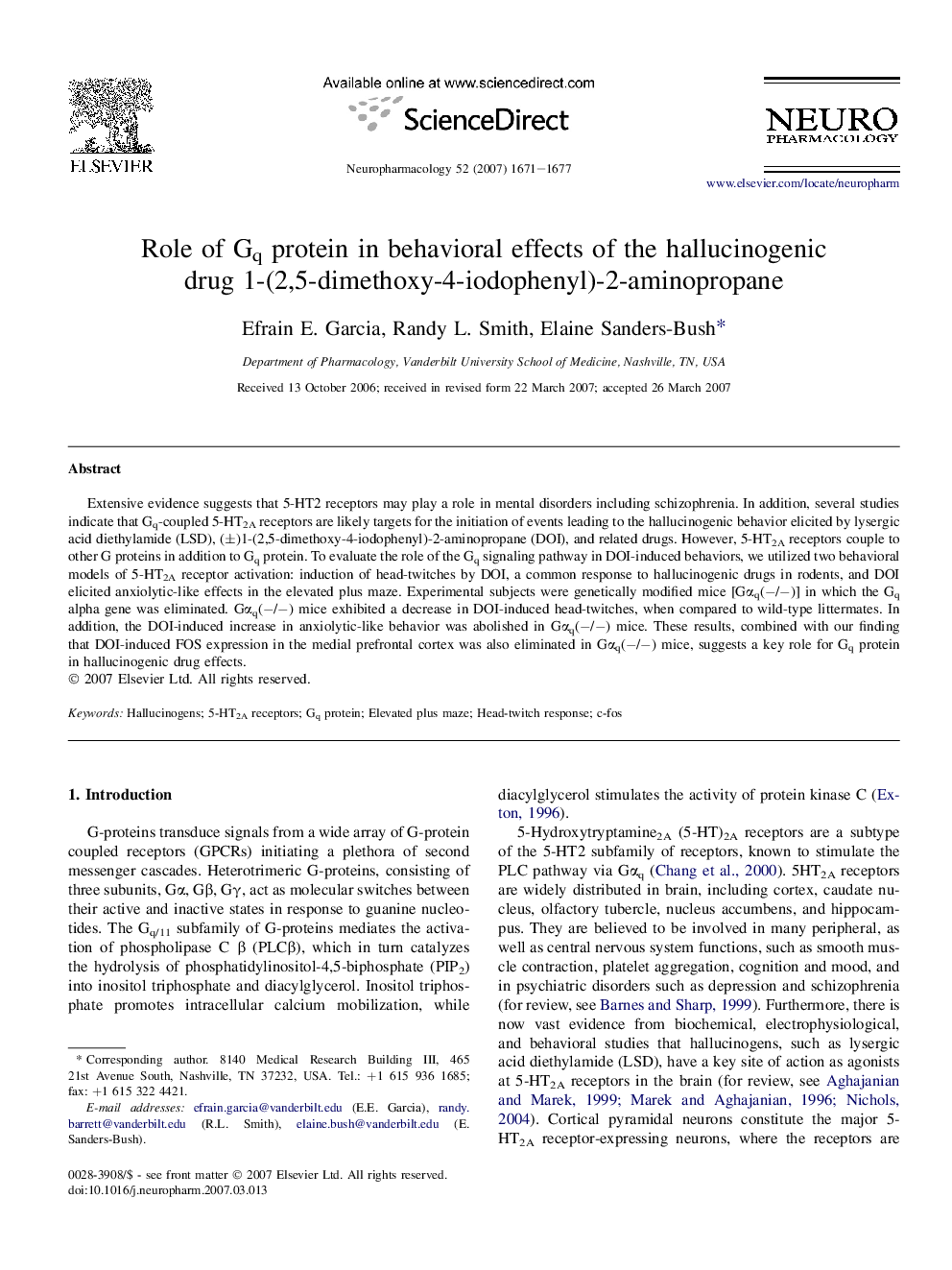| کد مقاله | کد نشریه | سال انتشار | مقاله انگلیسی | نسخه تمام متن |
|---|---|---|---|---|
| 2494696 | 1115575 | 2007 | 7 صفحه PDF | دانلود رایگان |

Extensive evidence suggests that 5-HT2 receptors may play a role in mental disorders including schizophrenia. In addition, several studies indicate that Gq-coupled 5-HT2A receptors are likely targets for the initiation of events leading to the hallucinogenic behavior elicited by lysergic acid diethylamide (LSD), (±)1-(2,5-dimethoxy-4-iodophenyl)-2-aminopropane (DOI), and related drugs. However, 5-HT2A receptors couple to other G proteins in addition to Gq protein. To evaluate the role of the Gq signaling pathway in DOI-induced behaviors, we utilized two behavioral models of 5-HT2A receptor activation: induction of head-twitches by DOI, a common response to hallucinogenic drugs in rodents, and DOI elicited anxiolytic-like effects in the elevated plus maze. Experimental subjects were genetically modified mice [Gαq(−/−)] in which the Gq alpha gene was eliminated. Gαq(−/−) mice exhibited a decrease in DOI-induced head-twitches, when compared to wild-type littermates. In addition, the DOI-induced increase in anxiolytic-like behavior was abolished in Gαq(−/−) mice. These results, combined with our finding that DOI-induced FOS expression in the medial prefrontal cortex was also eliminated in Gαq(−/−) mice, suggests a key role for Gq protein in hallucinogenic drug effects.
Journal: Neuropharmacology - Volume 52, Issue 8, June 2007, Pages 1671–1677